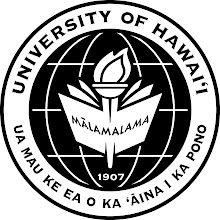 The University of Hawaiʻi Museum Consortium has completed the digitization of a unique natural science specimen collection from UH Mānoa's Anthropology Department's Archaeology laboratory.
The University of Hawaiʻi Museum Consortium has completed the digitization of a unique natural science specimen collection from UH Mānoa's Anthropology Department's Archaeology laboratory."The collection is fairly comprehensive for much of the archeological shell midden material commonly found in the Hawaiian landscape," said Dr. Michael Thomas of the UH Museum Consortium. Beachcombers and citizen scientists will also find the digital collection useful for identifying more than 190 species of seashells found throughout the Hawaiian Island beaches.
The collaborative project was cross disciplinary and involved several curators, students, community volunteers, and the University photographer. Thomas added, “This initiative is an excellent demonstration of how digital technologies can be applied to increase public access to university collections and to add-value to an underutilized reference collection."
The Anthropology Department's Marine Shell Collection began decades ago as an avocational pursuit of Bertell E. Davis. In 1985 Mr. Davis bequeathed the collection to his son, Bertell D. Davis, then an archaeology graduate student in the department. The younger Davis (PhD, Mānoa, 1990), who was interested in documenting the impact of humans on the environment, further developed the shell collection as a reference and comparative resource for identifying shell midden from Hawaiian and Pacific archaeological sites.
The collection, which includes nearly 200 species of marine mollusks, was donated to support undergraduate education through various courses of the Anthropology Department's Archaeology program in 2005. The specimens are currently curated by Archeology Lab Manager Jo Lynn Gunness and housed in UH Mānoa's College of Social Sciences Anthropology Department's Archaeology Program.
The University’s Virtual Museum, established in 2008, offers a single web portal to various university Natural Science and Humanities collections. Currently, the University’s Joseph F. Rock Herbarium, Insect Museum, and the Historic Clothing Museum have digital collection initiatives underway.
For more information, visit: http://www.flickr.com/photos/uhmuseum/sets/72157616090546606/

